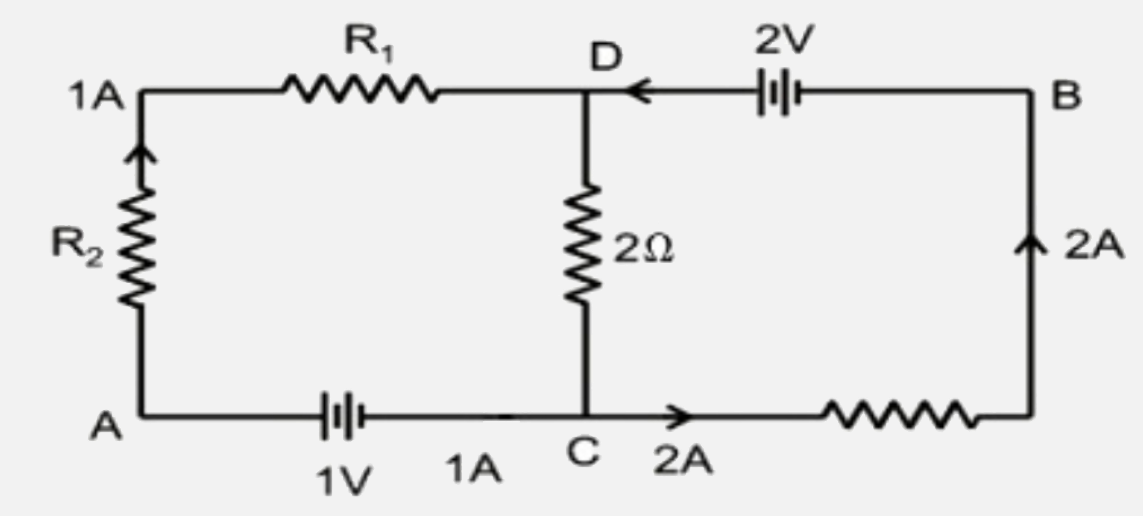In the circuit shown in the figure, if potential at point A is taken to be zero, the potential at point B is ?

Video Solution
Text Solution
The correct Answer is:x2=v0t+m1m2A(1−cosωt),l0=(m1m2+1)A
The string snaps and the spring force comes into play. The spring force beings an internal force for the two mass-spring system will not be able to change the velocity of centre of mass. This means the location of centre of mass at time t will be v0t
xcm=m1x1+m2x2m1+m2=v0t
⇒m1[v0t−A(1−cosωt)]+m2x2=v0tm1+v0tm2
⇒m2x2=v0tm1+v0tm2−v0tm1+m1A(1−cosωt)
⇒m2x2=v0tm2+m1A(1−cosωt)
⇒x2=v0t+m1m2A(1−cosωt)
(b) Given that x1=v0t−A(1−cosωt)
∴dx1dt=v0−Aωsinωt
∴d2x1dt2=−Aω2cosωt ....(i)
This is the acceleration of mass m1. When the spring comes to its natural length instantaneously then d2x1dt2=0 and x2−x1=l0
∴[v0t+m1m2A(1−cosωt)]−[v0t−A(1−cosωt)]=l0
(m1m2+)A(1−cosωt)=l0
Also when d2x1dt2=0,cosωt=0 from (1)
∴l0=(m1m2+1)A
|
Topper's Solved these Questions
- CURRENT ELECTRICITYBOOK - ALLENCHAPTER - CURRENT ELECTRICITYEXERCISE - EX.II
66 Videos
- CURRENT ELECTRICITYBOOK - ALLENCHAPTER - CURRENT ELECTRICITYEXERCISE - EXERCISE-V A
20 Videos
- CIRCULAR MOTIONBOOK - ALLENCHAPTER - CIRCULAR MOTIONEXERCISE - EXERCISE (J-A)
6 Videos
- GEOMETRICAL OPTICSBOOK - ALLENCHAPTER - GEOMETRICAL OPTICSEXERCISE - subjective
14 Videos
Similar Questions
Knowledge Check
In the given circuit the potential at point B is zero, the potential at points A and D will be
 AVA=4V,VD=9VBVA=3V,VD=4VCVA=9V,VD=3VDVA=4V,VD=3V
AVA=4V,VD=9VBVA=3V,VD=4VCVA=9V,VD=3VDVA=4V,VD=3V
In Figure if the potential at Point P is 100V, what is the potential at point Q?

View SolutionIn the given circuit, with steady current, the potential of point A must be

View SolutionIn the circuit shown, the point B is earthed. The potential at the point 'A' is

View SolutionIn the circuit shown in the figure, the value of Resistance X, when potential difference between the point B and D is zero will be

View SolutionIn the circuit shown in figure potential difference between the points A and B in the steady state is

View SolutionIn the circuit diagram shown in Figure , the potentials of the points B, C and D are respectively -

View SolutionIn the circuit element given here, if the potential at point B=VB=0, then the potentials of A and D are given as

View Solution


